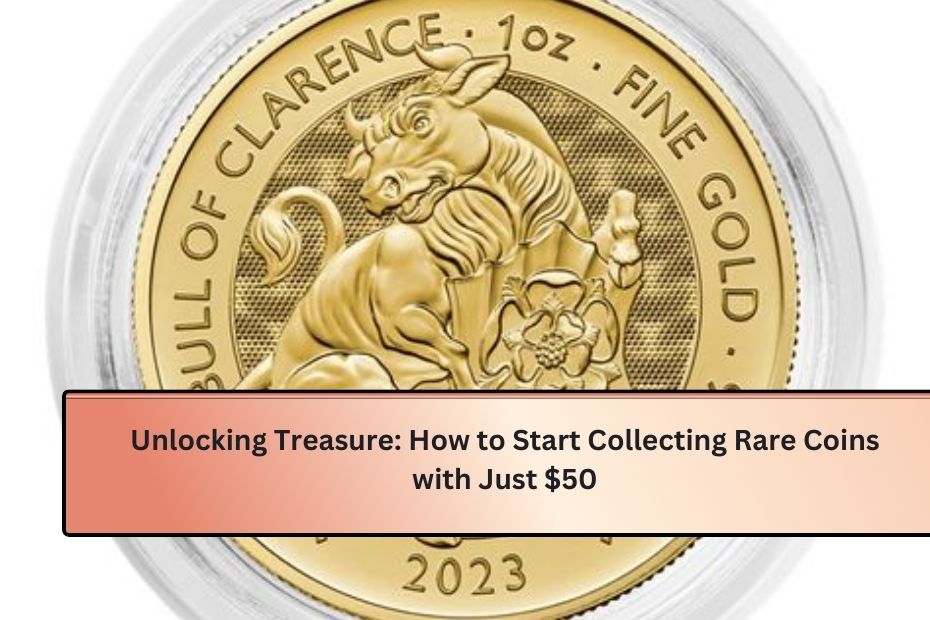Collecting coins can be a fun and exciting hobby! You might even discover that you have some valuable coins just lying around at home. Harrison Alley is a fiction writer who loves collecting rare coins. He believes that knowing how to find valuable coins is important for every collector. In this article, we’ll explore how to start collecting rare coins, what makes them valuable, and tips for spotting the best ones.
| Section | Description |
|---|---|
| Introduction | Overview of coin collecting and its appeal. |
| How to Start Collecting Rare Coins with Just $50 | Tips for beginners on getting started with coin collecting. |
| Think Big, Splash Big | Budget-friendly ways to start collecting. |
| What to Look For When Scouting for Rare Coins | Key factors to consider when searching for valuable coins. |
| Rarity Rules: Low Mintage Makes for High Prices | Understanding how rarity affects coin value. |
| Condition and Grade — Higher Is Always Better | The importance of coin condition and grading. |
| Unique Dates and Mintmarks Make Ordinary Coins Extraordinary | How dates and mintmarks contribute to coin value. |
| Nobody Likes Mistakes — Except for Coin Collectors | The value of minting errors in coins. |
| Important Historical Events Breed Important Historical Coins | The connection between historical events and coin value. |
| Conclusion | Summary of key points in coin collecting. |
| FAQ | Common questions about coin collecting. |
How to Start Collecting Rare Coins with Just $50
Think Big, Splash Big
Collecting coins doesn’t have to be expensive! You can start with just $50. There are many ways to find rare coins, and you don’t need a huge budget to begin. Remember, it’s not just about spending money; it’s about learning and having fun while you do it.
What to Look For When Scouting for Rare Coins
Over the years, Alley has learned how to spot rare and valuable coins. Here are some tips he shares for beginners like you:
Rarity Rules: Low Mintage Makes for High Prices
When it comes to coin collecting, rarity is very important. This means that the fewer coins there are, the more valuable they can become. Alley says, “Generally, coins with limited production numbers tend to be more valuable.”
For example, consider the Morgan silver dollars minted from 1893 to 1895. During that time, the government made fewer coins due to restrictions on silver purchases. The rarest Morgan silver dollar is the 1893-S, which only had about 10,000 coins made. Because of its rarity, it can sell for up to $90,000!
Condition and Grade — Higher Is Always Better
The condition of a coin also affects its value. Coins are graded on a scale from 1 to 70, with 1 being the worst condition and 70 being perfect. Coins graded by reputable organizations tend to be worth more. Alley emphasizes, “The higher the grade, the higher the demand.”
Unique Dates and Mintmarks Make Ordinary Coins Extraordinary
Mintmarks and dates are important details that can make a coin more valuable. Mintmarks show where a coin was made, while dates tell us when it was produced. Certain combinations of dates and mintmarks can be very rare.
For example, a coin with the date “1927-S” (made in San Francisco) can be worth $5,000, while one marked “1927-D” (made in Denver) can be worth even more!
Nobody Likes Mistakes — Except for Coin Collectors
Coins that have minting mistakes can also be worth a lot. Alley looks for errors like double strikes or coins that are not properly centered. Some common types of errors include:
- Planchet Errors: Sometimes, the blank disks (called planchets) used to make coins are the wrong size or shape.
- Die Errors: A die is used to stamp designs on the coin. If there’s a flaw, it can create an unusual coin.
- Strike Errors: If the die does not hit the planchet properly, it can create a misaligned coin.
Important Historical Events Breed Important Historical Coins
Coins that were made during important events in history can also be valuable. Alley points out that coins made during wartime or with special designs often have higher values.
For example, “war nickels” made between 1942 and 1945 used different materials because nickel was scarce during World War II. Similarly, coins from the time of King Edward VIII in Britain are valuable because they were only made in small amounts before he abdicated the throne.
Conclusion
Collecting rare coins can be an exciting adventure. You don’t need a lot of money to start, and with some tips, you can learn how to find coins that might be worth a lot more than you think. Look for coins with low mintage, check their condition, pay attention to unique dates and mintmarks, watch for minting mistakes, and keep an eye on coins connected to historical events. By following these steps, you might just become a successful coin collector!
Collecting coins not only helps you learn about history and economics but also gives you the thrill of the hunt. Whether you find coins in your pocket or at a store, remember to keep your eyes open for those hidden treasures!
FAQs
1. How much money do I need to start collecting coins?
You can start collecting coins with just $50. Many coin shops and online marketplaces offer affordable options for beginners.
2. What types of coins should I look for?
Look for coins with low mintage, good condition, unique dates, and mintmarks. Also, consider coins that have historical significance or minting errors.
3. How do I determine the value of a coin?
The value of a coin is determined by its rarity, condition, and historical significance. You can check online resources, coin grading services, and collector guides for pricing information.
4. What is a mintmark?
A mintmark is a letter on a coin that indicates where it was made. Different mintmarks can affect a coin’s value, with some being rarer than others.
5. What are minting errors, and why are they valuable?
5. What are minting errors, and why are they valuable?

